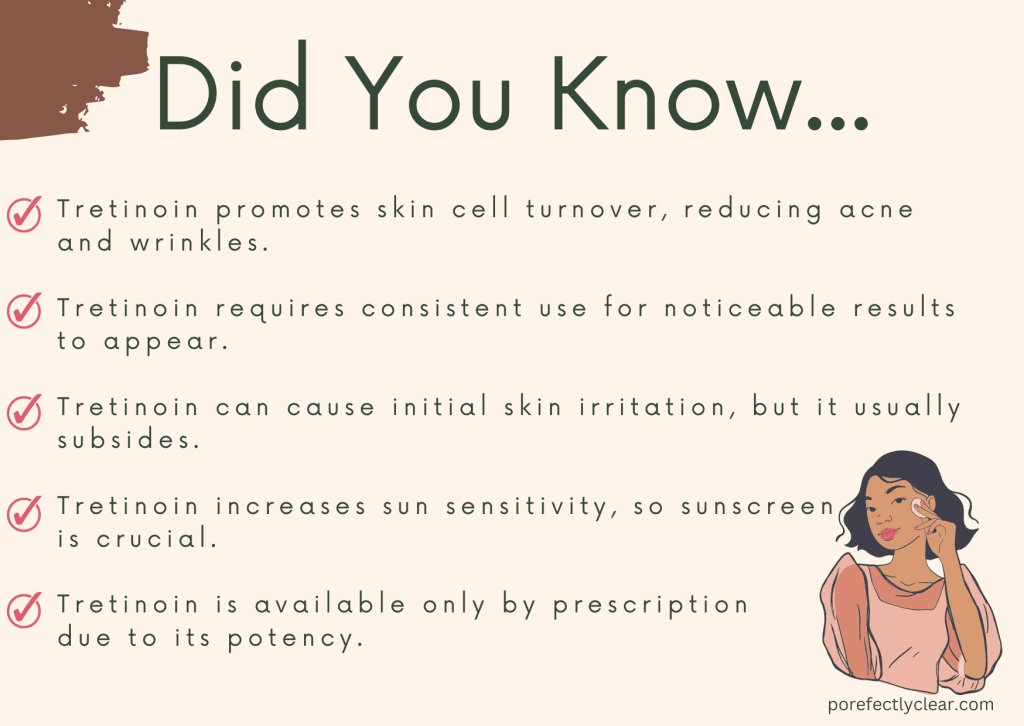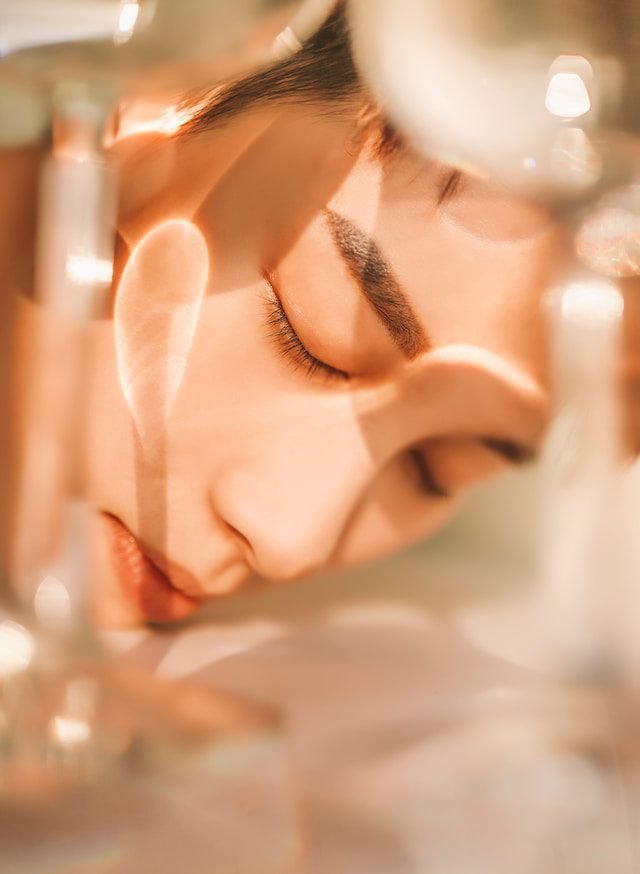Getting facials can be a wonderful way to pamper yourself and improve the appearance of your skin. However, if you are using tretinoin, a topical treatment for acne, wrinkles, and hyperpigmentation, it’s important to take some precautions to ensure the safety of your skin.

Understanding Tretinoin and its Effects on Skin
Tretinoin cream is a topical treatment that is commonly used for acne, wrinkles, and hyperpigmentation. It is available in different concentrations, so it’s best to consult with a dermatologist to determine the concentration that is best for your skin type.
Tretinoin cream is considered the gold standard in skincare products, as it has been proven to be effective in improving skin texture and appearance. When applied to the skin, tretinoin cream exfoliates skin cells, promotes new cell growth, increases collagen production, and reduces hyperpigmentation, dark spots, and acne scars. However, tretinoin cream may initially cause redness, inflammation, and peeling of the skin, so it’s important to use sunscreen during the day to protect your skin.
Overview of Tretinoin
Tretinoin, also known as retinoic acid, is a form of vitamin A that is commonly used in skincare products. It works by exfoliating skin cells, revealing new, healthier skin cells underneath. This exfoliation process helps to improve skin texture, reduce fine lines, and even out skin tone. Tretinoin cream also increases collagen production, which improves skin elasticity and reduces the appearance of wrinkles. It is available in different concentrations, with lower concentrations being less irritating to the skin.
Is it safe to get a facial while using tretinoin?
It is generally not recommended to get a facial while using tretinoin, as tretinoin can make the skin more sensitive and prone to irritation. It’s best to consult with a dermatologist before getting a facial while using tretinoin to ensure it is safe for your specific situation.
How Tretinoin Works on the Skin
Tretinoin cream works by exfoliating skin cells, promoting new cell growth, and increasing collagen production. When applied to the skin, tretinoin cream helps to remove dead skin cells, revealing new, healthier skin cells underneath.
This exfoliation process helps to improve skin texture, reduce fine lines, and even out skin tone. Additionally, tretinoin cream increases collagen production, which improves skin elasticity and reduces the appearance of wrinkles. However, it’s important to note that tretinoin cream may increase skin sensitivity, so it’s crucial to use sunscreen during the day to protect your skin from the sun’s harmful rays.

Potential Risks of Facials While Using Tretinoin
While facials can be beneficial for the skin, it’s important to be aware of the potential risks of getting facials while using tretinoin. The use of tretinoin cream may cause skin irritation, redness, and peeling, especially in the initial stages of treatment. It can also make the skin more sensitive to sunlight, so sunscreen should be used daily. It’s important to understand how tretinoin cream interacts with facial treatments and to take precautions to minimize any potential side effects.
Common Side Effects
When using tretinoin cream, it’s common to experience side effects such as skin irritation, redness, and peeling. These side effects are temporary and usually subside as your skin adjusts to the treatment. Some individuals may also experience temporary dryness, itching, and skin flaking.
It’s important to use sunscreen daily to protect your skin from the sun’s harmful rays, as tretinoin cream can make the skin more sensitive to sunlight. In addition, some individuals may experience temporary skin breakouts when starting tretinoin cream, as it works to exfoliate the skin and bring impurities to the surface. Finally, tretinoin cream may cause temporary hyperpigmentation, which typically resolves over time.
Interaction with Facial Treatments
It’s important to be cautious when combining tretinoin cream with facial treatments, as tretinoin cream increases skin cell turnover, making the skin more sensitive during facials. It’s best to avoid facials that involve physical exfoliation, as this can further irritate the skin.
Additionally, certain facial treatments, such as chemical peels, may interfere with tretinoin application and should be avoided. It’s also important to avoid applying tretinoin cream immediately after waxing or shaving treatments, as this can lead to further irritation of the skin. It’s best to consult with a dermatologist to determine which facial treatments are compatible with tretinoin cream.
Safe Facial Treatments When Using Tretinoin
While there are certain facial treatments to avoid while using tretinoin cream, there are also safe facial treatments that can be beneficial for the skin. Microdermabrasion, LED masks and light therapy, and hydrafacial treatments are some of the facial treatments that can be safely performed while using tretinoin cream.

Microdermabrasion and Tretinoin
Microdermabrasion is a facial treatment that exfoliates the skin, improving its texture and appearance. When used in conjunction with tretinoin cream, microdermabrasion treatment can enhance its effects, as tretinoin cream works by exfoliating skin cells and promoting new cell growth.
However, it’s important to consider your skin type, tretinoin concentration, and skin irritation before undergoing microdermabrasion treatment. It’s best to discuss tretinoin cream use with an aesthetician before undergoing microdermabrasion treatment. After the treatment, it’s important to apply sunscreen and moisturizer, especially while using tretinoin cream, to protect and hydrate the skin.
LED Masks and Light Therapy with Tretinoin
LED masks and light therapy treatments can be used in conjunction with tretinoin cream to improve skin appearance. LED therapy can help reduce acne inflammation, redness, and fine lines, often enhancing the results of tretinoin cream.
However, it’s important to consult with a dermatologist to determine the best treatment plan combining tretinoin cream and LED therapy. Before using LED masks or undergoing light therapy treatments, specific instructions for tretinoin application should be followed. It’s also important to use sunscreen and protective eyewear during LED therapy, as tretinoin cream can increase skin sensitivity to sunlight.
Hydrafacial and Tretinoin Compatibility
Hydrafacial treatment is generally safe while using tretinoin cream. Hydrafacial treatment exfoliates, cleanses, and hydrates the skin, providing overall skin rejuvenation. It’s best to consult with a dermatologist to ensure that tretinoin cream application is adjusted accordingly during hydrafacial treatment.
The use of tretinoin cream may enhance the results of hydrafacial treatment, reducing acne, hyperpigmentation, and fine lines. specific instructions from the dermatologist should be followed for tretinoin application before and after hydrafacial treatment.
Precautions to Take for Facial Treatments While Using Tretinoin
When getting facial treatments while using tretinoin cream, there are certain precautions that should be taken to minimize side effects. It’s important to consider the timing between tretinoin application and facial treatment, as well as choosing skincare products that are compatible with tretinoin use.
Timings Between Tretinoin Application and Facial Treatment
To ensure the safety of your skin, it’s best to wait at least 24 hours after tretinoin application before getting a facial treatment. This allows tretinoin to fully absorb into the skin, reducing the risk of skin irritation.
It’s also important to avoid facial treatments on the same day as tretinoin application, as this can further irritate the skin. Spacing out facial treatments and tretinoin application can help minimize side effects. specific instructions from a dermatologist should be followed regarding tretinoin application and facial treatments.
Choosing the Right Skincare Products
When using tretinoin cream, it’s important to choose skincare products that are gentle and suitable for sensitive skin. Look for products that do not contain ingredients that can cause irritation when used with tretinoin cream, such as exfoliants, retinol, or benzoyl peroxide. hyaluronic acid-based products can be beneficial, as they help hydrate and nourish the skin while using tretinoin cream. It’s best to consult with a dermatologist to determine skincare products that complement tretinoin use.
Alternatives for Hair Removal When on Tretinoin
If you’re using tretinoin cream, it’s best to consider alternative hair removal methods, such as waxing, shaving, or electrolysis. Laser hair removal treatments should be temporarily avoided while using tretinoin cream, as tretinoin can increase skin sensitivity.
It’s best to consult with a dermatologist for hair removal options that are safe to use with tretinoin cream. When using hair removal products while on tretinoin, additional precautions, such as applying sunscreen, should be taken to protect the skin. It’s important to discuss hair removal concerns and treatment options with a skincare professional.

Would Stopping Tretinoin Temporarily Allow More Facial Treatment Options?
Stopping tretinoin use temporarily may allow for more facial treatment options, as tretinoin cream can increase skin sensitivity, making certain facial treatments unsuitable. However, it’s important to consult with a dermatologist to determine if temporarily discontinuing tretinoin is suitable for your skincare routine.
Before making a decision, it’s important to consider the potential effects of tretinoin withdrawal, such as acne breakouts or the appearance of wrinkles. There may be alternative skincare treatments that can complement tretinoin use without the need for discontinuation. It’s best to follow professional advice from a dermatologist regarding tretinoin use and facial treatment options.
Conclusion
In conclusion, it is important to prioritize the health and safety of your skin when considering facial treatments while using tretinoin. Although there may be potential risks and side effects associated with combining tretinoin and facials, there are still safe options available.
Microdermabrasion, LED masks light therapy, and hydra facials are all compatible with tretinoin use and can provide beneficial results without causing harm to your skin. However, it is crucial to take precautions such as timing between tretinoin application and facial treatments, and choosing the right skincare products that are gentle and non-irritating. Additionally, if you are considering hair removal while on tretinoin, it is best to explore alternative methods to avoid any potential complications.





